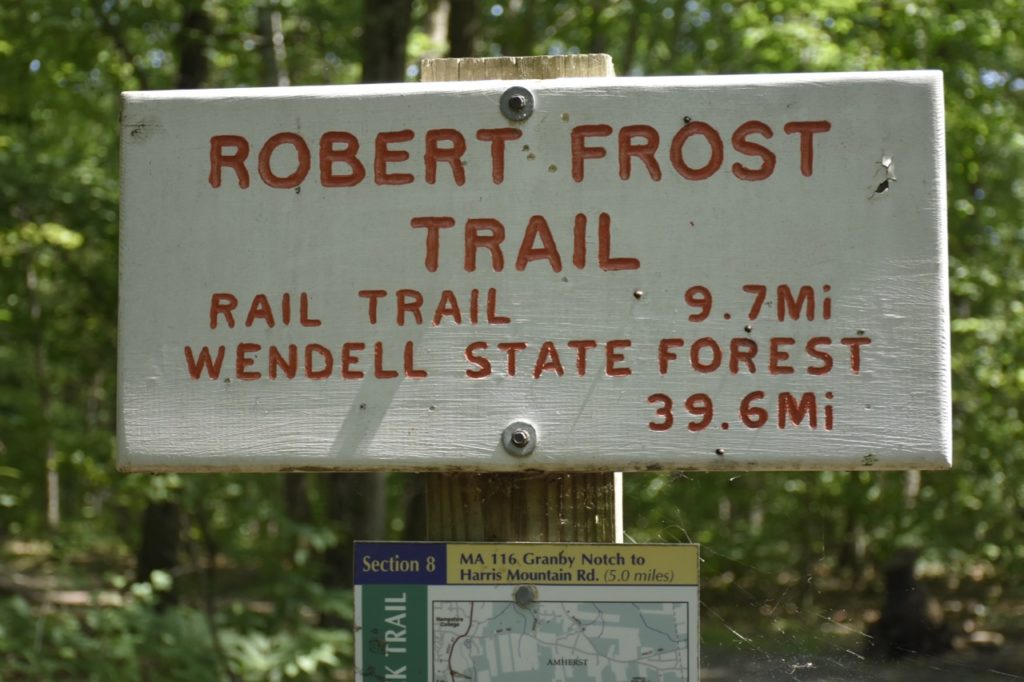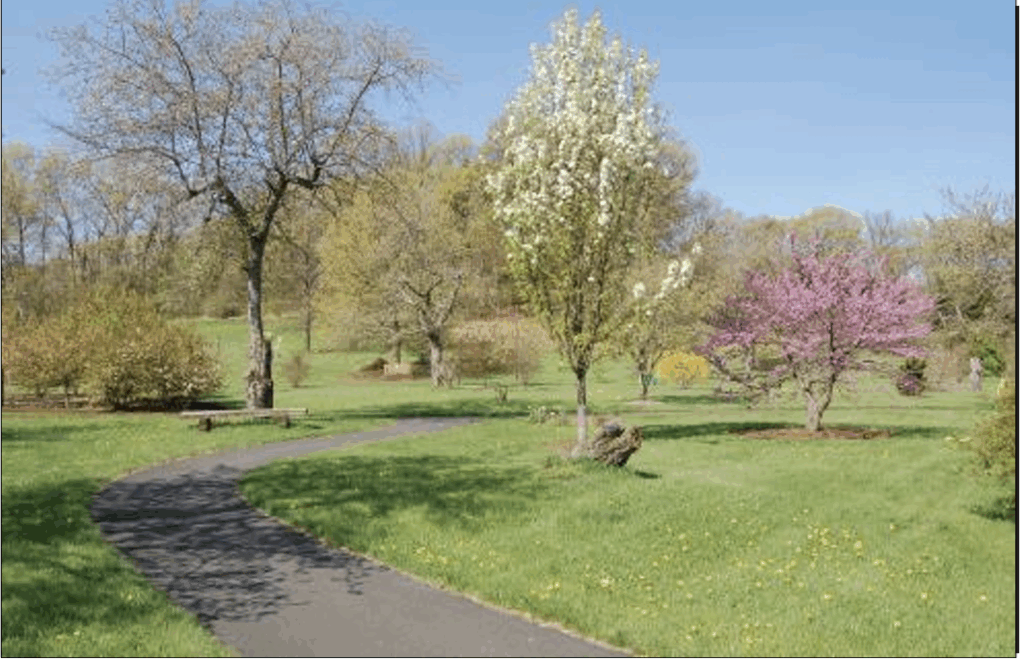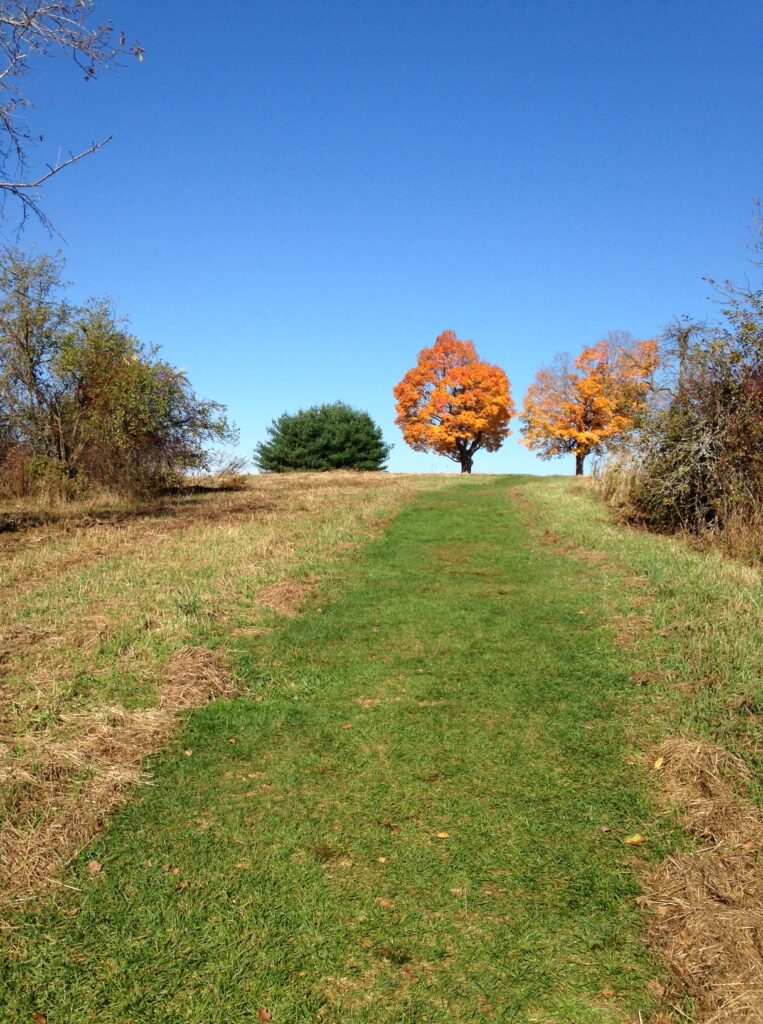Views on Views: Town Trails as a Way to Appreciate the Landscape

Trail head for Robert Frost Trail at the Notch Visitor's Center in Amherst. Photo:Art Keene
This is the fourth column in a ten-part series. View the previous articles in the series here.
Calling all trail seekers, woodland lovers and forest bathers! The trail systems here and in nearby towns invite you into this season as darker evenings arrive in this hemisphere. These trails offer us the easiest way to step into the natural landscape all around us. And at this time of year, now that the leaves have fallen, the contours of the land are much more visible. Amherst’s most well-known of these amenities is the Robert Frost Trail, but the town actually has an extensive network of trails where all motorized vehicles are prohibited.
Four of our town trails are fully accessible, including one that is completely paved that leads into the hidden world of the Orchard Arboretum near Applewood in South Amherst. Volunteers maintain these trails and if you see something that is amiss on your hike you can report it to the town’s Conservation Commission.

Other civic-minded organizations like Kestrel Land Trust and the Hitchcock Center for the Environment also own, manage and maintain trails for public use. The Hitchcock Center is currently upgrading its trails and allowing some to re-naturalize. They say more about this on their website:
The Valley is special in part because of our incredible natural spaces, and biodiversity. Here … you’ll find mostly maple and oak trees, though, keep an eye out for some birch and tree of heaven. Gray Squirrels are preparing for winter, while piliated, downy, and red-bellied woodpeckers drum upon the trees. Meadow voles scurry under the leaves and grasses. Blue jays, tufted titmouse, juncos, and mockingbirds can be seen darting about the foliage – occasionally alarming a Red-Tailed Hawk!
Statements like this demonstrate vividly that when we access our local trails we are able to apprehend and appreciate the outdoors, and the many gifts of nature. My hope is always that by doing so,by having a physical and perhaps even a spiritual connection, we will be better able to advocate for nature’s protection: after all, the local environment in Amherst is one that we all share.
Other ways to access town trails are via Amherst’s Conservation Areas: some of these include Amethyst Brook, the Mill River Conservation Area, (that includes the Salamander and Newt stone walls/sculptures at Cushman and Mill River Recreation Area), and the Mount Pollux Conservation Area, managed by Kestrel.

Further afield but equally fun to explore are Holland Glen (on the Belchertown line) and Silvio O. Conte National Wildlife Refuge in Hadley, which, like the Riverside Park trail in Sunderland, is universally accessible. “In addition to offering human beings easy access to natural landscapes, . the trails and their associated conservation areas can help protect riparian landscapes (Mill River in North Amherst), watersheds, and other places of natural beauty (Buffam Falls.)



The other significant aspect of Amherst’s trail networks is that collectively, they represent the preservation of public space by local government. This is public space writ small, rather than the State or National Parks, the U.S. Forest or Fish and Game Services.
When I lived in the hilltowns, one of my neighbors, Arianna Collins, the founder of “Offerings for Community Building” said: “When the world feels crazy, get outside and connect with Nature.” If this advice isn’t persuasive enough, perhaps poetry will enrich your interest in our shared environment and its landscapes. Fellow teacher, writer and transplant to Western Mass from the UK, Christian McEwen shares a poem about the meanings of the forest:
“Lost” by David Wagoner (1926-2021) Stand still. The trees ahead and bushes beside you Are not lost. Wherever you are is called Here, And you must treat it as a powerful stranger, Must ask permission to know it and be known. The forest breathes. Listen. It answers, I have made this place around you. If you leave it, you may come back again, saying Here. No two trees are the same to Raven. No two branches are the same to Wren. If what a tree or a bush does is lost on you, You are surely lost. Stand still. The forest knows Where you are. You must let it find you. |
